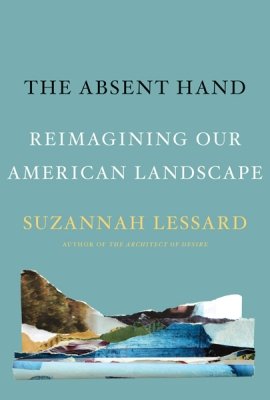Suzannah Lessard
Fellow
Professional Affiliation
Independent Writer
Expert Bio
The riddle of what the changing landscape means has been with me for some time. I trace it back to an early love affair with the 19th century rural landscape of Long Island that was still intact when I was a child, but which I saw devoured by suburbanization as Suffolk County became the fastest growing county in the country. My first piece for The New Yorker, where I was a staff writer for 20 years, was called "The Suburban Landscape: Oyster Bay, Long Island." And ever since then the subject of both our citiscapes and our metamorphizing countryside has crept into my work in diverse ways. But it was not until I had finished The Architect of Desire: Beauty and Danger in the Stanford White Family--a book imbedded in landscape as an expressive medium, and a work that was the central endeavor of my life throughout most of the New Yorker years--that I was ready to embrace this matter head on, in all its ramifications. Though Architect was a deeply personal book, I think of it as the gymnasium in which I developed the muscles I need for my present work. As I work inductively, in the beginning I knew only that my subject was the landscape of America. That is about as broad as you can get, but what I found was that wherever I went, whether rural or urban, when I dug down, it became clear that, in one way or another, the determining force in that landscape was sprawl. It was true deep in pastoral Kentucky, for example, and it was true in the deserted open spaces of inner cities. So the subject became sprawl, but then it was too narrow. Ultimately, it became clear that my true subject was the decentralization of the landscape by a convergence of historical forces, reconfiguring our world on many levels. The reconfiguration is so radical that, on the deepest levels, our imaginations are staggered by it. The transformation is at odds with traditional ways of seeing landscape, and all the layers of meaning that have, through the centuries, become attached to those ways of seeing. There has consequently been a long lag between the actual changes and our cultural, political, and spiritual understanding of them. Part of the work of this book is to reimagine our landscape in ways that are aligned with the kinds of historical change that has shaped it and the contemporary conditions that it reflects. My reasoning is that only when we are envisioning the landscape in a way that is reality-based in the deepest sense can we begin to develop effective ways of bringing a runaway, unsustainable pattern into the realm of intention. So many issues converge in this matter of the landscape. As a generalist, I see my work as one of creating a frame large enough to contain them all-a humanistic inclusive frame-and then exploring their relation to each other. My method is frankly literary because that allows for humanistic inclusiveness and allows me to bring in all the experiential angles and levels of feeling connected with this subject that a more scholarly or purely policy-oriented work would not allow. But this is a work, paradoxically it may seem, that is also deeply engaged with policy development in this area, with the practical, on-the-ground movements that have emerged to confront our way of growth, and the technical understanding of the issues that have been developed in a variety of professional quarters. It has been a long-standing, often thwarted ambition to devise alternative, more inclusive forms for our policy discussions, originating in my days at The Washington Monthly, where I began my career and where my first piece was on politics and the suburban way in Smithtown, Long Island.
Expertise
Landscape and its meaning; writing
Wilson Center Project
"The Dark Fields of the Republic: An Inquiry into the Meaning of Our Decentralizing Landscape"
Major Publications
- "The World Turned Inside Out." The Wilson Quarterly, Summer 2001.
- "The Split." (Ninety Six & Park Avenue, NYC), The New Yorker, Dec. 8, 1997, 72.
- The Architect of Desire: Beauty and Danger in the Stanford White Family. Dial Press, NY, 1996.
Insight & Analysis by Suzannah Lessard
- Book
- Society and Culture
The Absent Hand: Reimagining Our American Landscape
